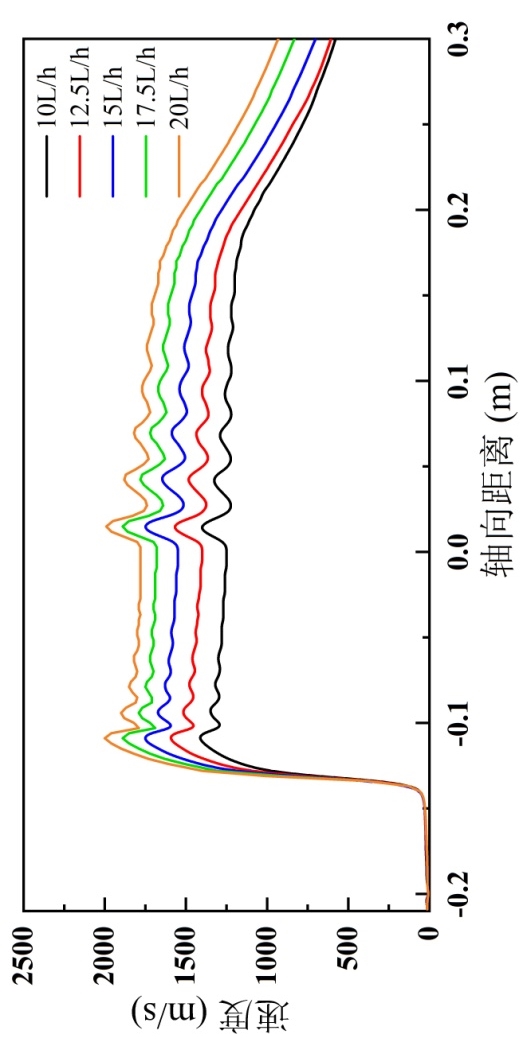名称 : 低温高速火焰喷涂不同煤油与氧气流量对焰流速度的影响
英文名称 : Effect of different kerosene and oxygen flow rates on flame flow rate
材料 : 431
委托单位 : 中国人民解放军军事科学院国防科技创新研究院
实验单位 : 中国人民解放军军事科学院国防科技创新研究院
实验方法 : 无
实验设备 : 无
实验条件 : 无
说明 : 图表示不同反应物流量下焰流速度与轴向距离的关系。煤油与氧气在燃烧室内部燃烧,经过拉瓦尔喷嘴与氮气充分混合并形成超音速焰流。受激波现象的影响,焰流速度在拉瓦尔喷嘴扩张段与喷枪管口自由射流区均出现锯齿状波动,最后在一定喷涂距离后快速衰减。根据拉瓦尔喷嘴喉部气体函数关系以及上节中对焰流温度的分析,较高的煤油与氧气流量可以提供较高的焰流温度,因此也一定程度上提高了焰流的速度。
英文说明 : The graph represents the flame flow velocity versus axial distance for different reactant flow rates. The kerosene and oxygen are burned inside the combustion chamber, and are fully mixed with nitrogen through the Laval nozzle and form a supersonic flame flow. Affected by the excitation phenomenon, the flame velocity in the expansion section of the Laval nozzle and the free jet area of the nozzle nozzle both appear jagged fluctuations, and finally decay rapidly after a certain spraying distance. According to the Laval nozzle throat gas function relationship and the analysis of the flame temperature in the previous section, higher kerosene and oxygen flow can provide a higher flame temperature, and therefore also to a certain extent to increase the flame speed.
数据来源 : 分析测试报告
重点项目名称 : 废旧重型装备损伤检测与再制造形性调控技术
项目所属数据集 : 低温高速火焰喷涂枪设计与建模数据数据集






















